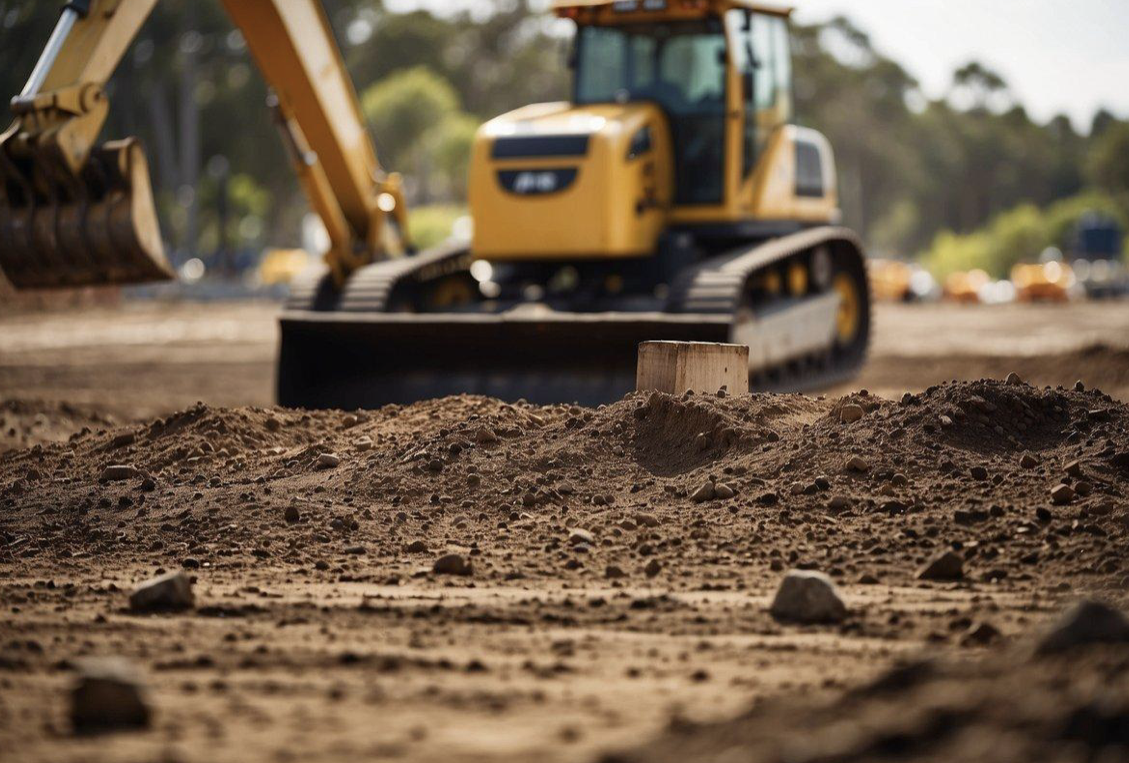Soil Stabilisation Compliance in Queensland: Ensuring Environmental and Regulatory Adherence
Soil stabilisation in Queensland is a crucial process for both environmental sustainability and compliance with local legislation. This approach involves altering the physical properties of soil to meet the requirements of various land use applications, such as construction and agricultural activities. In Queensland, practices of soil stabilisation available from Erizon Queensland must adhere to the Soil Conservation Act, ensuring that land management methods do not adversely affect the soil's health or the environment at large.
Compliance with soil stabilisation is fundamental to the state's overarching commitment to land resource management. Queensland's legislation mandates that any soil stabilisation method must not only serve its immediate purpose but also contribute to the long-term stability and fertility of the soil. This commitment to sustainability reflects a broader understanding that land is a valuable resource that necessitates careful and responsible management.
Given the diverse nature of Queensland's landscape, soil stabilisation techniques can vary, requiring site-specific approaches. The government provides guidelines and support for these practices, ensuring they are conducted in an environmentally responsible manner. All stakeholders are expected to understand and implement these standards to maintain the integrity of Queensland's soils, ecosystems, and the broader environment.
Regulatory Framework
The regulatory framework governing soil stabilisation in Queensland is underpinned by stringent legislation and guidelines designed to protect the environment, with a focus on soil conservation and the safeguarding of the Great Barrier Reef.
Soil Conservation Act 1986
The Soil Conservation Act 1986 serves as the cornerstone of soil stabilisation standards in Queensland. Updated periodically to incorporate evolving environmental concerns, this Act legislates practices for the sustainable use and management of soil resources. Compliance with the Act's provisions is mandatory for all soil stabilisation activities, and it emphasises:
The implementation of soil conservation guidelines to prevent erosion and degradation.
Collaboration with local landholders and industries to develop site-specific conservation plans.
Local Government Legislation
Local government bodies in Queensland operate under local legislation, which empowers them to enforce soil stabilisation measures in line with the state’s overarching regulations. These local entities:
Work closely with developers to ensure adherence to soil conservation standards.
Are tasked with the responsibility of monitoring local compliance and management of soil-related activities.
Great Barrier Reef Protection Measures
Specific legislations and measures are in place to protect the Great Barrier Reef from the impacts of sediment runoff caused by soil destabilisation. The Queensland Government imposes rigorous compliance obligations on industries and projects operating within the Great Barrier Reef catchment areas, including:
Strict land management practices to minimise soil erosion.
Regular review and reinforcement of soil conservation regulations to mitigate risks to the reef ecosystem.
All legislation and practices are in place not only to maintain soil integrity but to ensure the protection of one of Australia’s most valued natural assets. They reflect a commitment to environmental conservation for current and future generations.
Stabilisation Techniques and Materials
In Queensland, soil stabilisation is underpinned by a variety of techniques and materials, each selected based on their effectiveness, cost efficiency, and sustainability. These solutions are geared towards enhancing the durability and stability of soil in various applications, including roads, mining, and construction projects.
Cement and Fly Ash
Cement and fly ash are commonly utilised binding agents in soil stabilisation methods. The use of cement is a standard technique for its readily available nature and its capability to enhance soil strength. Fly ash serves as a cost-effective and sustainable alternative or complement to cement, given that it is a by-product of coal combustion in power plants. This combination not only aids in achieving desired load-bearing capacities but also in reducing environmental impact.
Materials Used:
Cement: portland cement
Fly Ash: Class F and Class C
Benefits:
Enhanced compressive strength
Cost-effective solution
Hydromulching and Revegetation
Hydromulching is a revegetation process that involves spraying a slurry of seeds, mulch, fertiliser, and water onto the land. In terms of soil stabilisation, hydromulching is instrumental in preventing erosion while promoting new growth, leading to a natural form of soil reinforcement. Revegetation further sustains this process by planting native species, effectively binding the soil and maintaining the ecological balance, proving indispensable on projects that require a sustainable and organic approach.
Techniques:
Soil assessment
Slurry application
Sustainability Factors:
Erosion control
Promotion of local flora
Application in Mining and Construction
In the mining industry and construction sector, soil stabilisation is a cornerstone for the creation of durable and reliable roads and infrastructures. Techniques such as cement stabilisation provide groundwork for heavy machinery and constant traffic, ensuring operational efficiency and safety. Applying these methods leads to significant improvements in soil properties, thereby facilitating the construction phase and extending the lifecycle of the projects.
Key Uses:
Mining: Access roads and drill sites
Construction: Foundations and load-bearing structures
Advantages:
Improved soil load-bearing capacity
Increased road longevity
Soil Management Strategies
Effective soil management strategies are essential for maintaining soil health and preventing soil erosion. In Queensland, adherence to guidelines and best practices is crucial for soil stabilisation compliance.
Erosion Control and Prevention
Erosion control is a priority in managing Queensland soils. Key strategies include:
Physical Barriers: Use of silt fences, sediment basins, and contour banks to disrupt the flow of water and reduce erosion potential.
Ground Cover: Maintaining adequate vegetation or mulch to protect soil from rain impact and overland flow.
Vegetation and Land Use
Vegetation plays a critical role in soil stability. It's important to consider:
Appropriate Vegetation: The selection of plant species suited to local soil types and climate conditions for effective land use.
Integrated Management: Balancing land use with vegetation cover to ensure sustainable land and soil management practices.
Data Mapping and Monitoring
Accurate data collection and analysis inform successful soil management. Elements to include are:
Map Creation: Utilising geographic information systems (GIS) to create detailed maps of topography, soil types, and land use.
Metadata Documentation: Ensuring all data is accompanied by metadata, compliant with Creative Commons Attribution 4.0, to facilitate the sharing and accuracy of information.
Compliance and Best Practices
In Queensland, compliance with industry specifications ensures sustainable soil management and engages communities in land conservation efforts. These practices are informed by guidelines and aim to protect natural resources.
Industry Specifications
Queensland mandates that industries follow stringent soil stabilisation specifications to maintain soil health and ensure structural integrity. Engineers are required to design footings in compliance with the Australian Standard to accommodate the expansive and contractive nature of reactive clay soils. This specification is last reviewed periodically to reflect progress in soil management and catchment conservation.
Conservation and Sustainability
Soil conservation guidelines employ a range of strategies to foster sustainability within the natural landscape. Queensland's management of land involves vigilant adherence to soil conservation practices that balance industry needs with environmental stewardship. The guidelines are comprehensive and provide practical tools for sustainable land management. Key entities like Local governments, State agencies, and NRM regional groups are central to these efforts.
Engaging with Landowners and Communities
An essential component of soil stabilisation compliance is the active engagement with landowners and community groups. The Department of Resources outlines planned compliance activities, targeting effective communication with landowners to enhance community involvement in soil conservation efforts. By collaborating with Landcare groups, consultants, and agribusinesses, they foster a collective responsibility for maintaining the soil health and preserving Queensland’s diverse landscapes.









